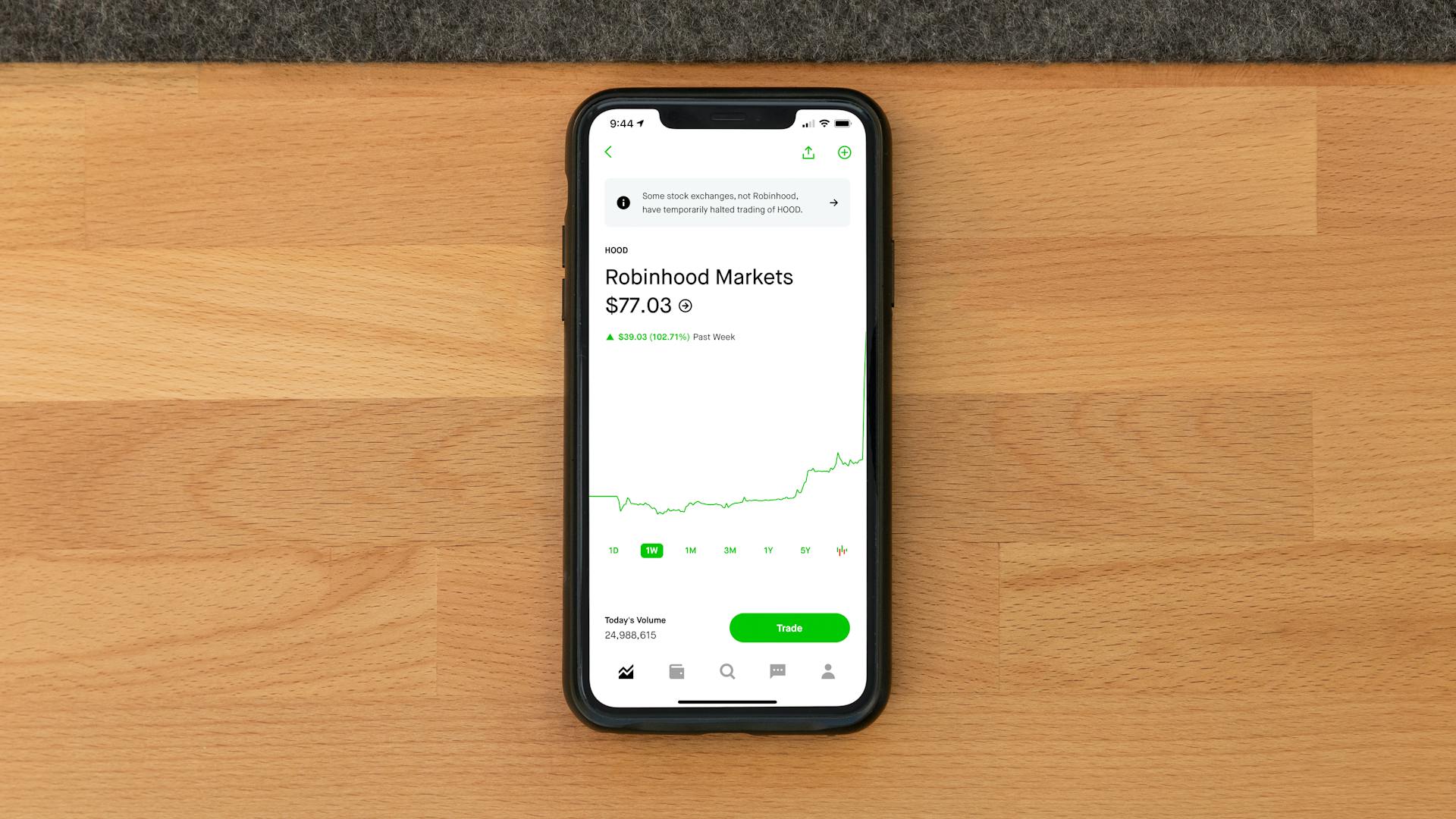Where Did Buy High and Sell Low Strategies Come From? – FangWallet

This article may contain references to products or services from one or more of our advertisers or partners. We may receive compensation when you click on links to those products or services. Nonetheless, our opinions are our own.
Key Highlights
- “Buy low, sell high” is an easy investment strategy. It tries to make you more money by timing the market right.
- This strategy means you buy things like stocks, real estate, or other assets when the price is low. Then, you sell them later at a higher price.
- To use “buy low, sell high,” you should know about market cycles, trends, and how investors feel.
- Many investors struggle to follow this method because emotions can influence their choices. It’s also hard to know when the market will be at its lowest or highest.
- Although this idea seems simple, it often goes against our natural thinking. People tend to buy when there is excitement and sell when prices drop.
The stock market’s appeal lies in its potential for profit. “Buy low, sell high” is a common saying. Real-life application is tough. The plan seems simple: buy things at a low price and sell them for more. However, things are not that easy and go according to plan. The stock market can change fast. Also, how people feel can make it hard to buy low and sell high all the time.
Understanding Buy High, Sell Low
The saying “buy low, sell high” is about using changes in the stock market to your advantage. It means finding times when a stock or asset class costs less than what it is really worth. When you see these good deals, you buy them, hoping the price will go up in the future. On the other hand, this idea also means selling when a stock’s price is higher than its real value. Doing this can help you make money from the high price based on what people think.
The main issue with this strategy is figuring out when prices change. You must discover the right value of a stock and predict how the market will respond. Emotions and outside events often confuse investors. This confusion makes it hard for them to buy low and sell high.
Defining the Strategy in Simple Terms
Let’s simplify the “buy high, sell low” strategy. Picture this: you spot a trendy item at a garage sale for a low price. You think it might be worth more down the line, so you choose to buy it. Your plan is to fix it up and then sell it at a higher price to make a profit.
Now, imagine you have a great gadget that everyone wants. A lot of people like it, so the price goes up. You decide to sell it at this higher price because many people want to buy it. This is what selling high means.
The stock market is like any other market where people sell and buy items. It works based on supply and demand. The idea of “buy high, sell low” aims to make money from price changes. To do well in the stock market, you need to study it carefully. You must also understand economic factors and keep your emotions in check when prices go up or down.
Common Misconceptions and Clarifications
One common mistake people make about the “sell high strategy” is believing you must time the market perfectly. While timing is important, the main idea is to spot value differences. To “buy low,” you need to find assets priced below their real value. This means you have to clearly understand financial signals, market trends, and how to assess companies.
Selling high is more than just putting items up for sale when prices go up. It’s about knowing when the market price of something is far from its true worth. This can happen due to people’s emotions and excitement in the market. To really understand this, you should put your feelings aside. Focus on smart choices when investing.
The idea of “buy high, sell low” suggests a new way to invest. It encourages you to be careful and to think clearly. This is very important when the markets are fluctuating. Don’t just do what others are doing.
Preparing for a Contrarian Investment Approach
To succeed in unstable markets, you need a simple plan and good tools to make decisions. Before you think about “buying high and selling low,” it’s crucial to learn and understand. You need to know how much risk you can handle. You should also set clear financial goals and watch out for potential issues.
Having the right information is important if you are interested in real estate or a stock. It helps you make better decisions. With this knowledge, you can handle market challenges more confidently.
Essential Tools and Resources Needed
First, you should get to know financial statements, market indicators, and technical analysis. This understanding will help you see how a company is doing financially, spot trends in the industry, and find growth chances. It is important to read trustworthy financial news. Use research platforms and follow groups like the Securities and Exchange Commission (SEC) for useful information. This way, you can make smarter choices.
Setting clear financial goals is key for your investing journey. You should think about how long you want to invest. You also need to know what risks you can handle and what returns you expect. This will guide you on how to use your money and make smart choices. Remember, investing takes time. Your plan should match your financial goals if you want to succeed in the future.
Finally, don’t forget the feelings that come with investing. Fear and greed can push you to make quick choices. It is vital to have a clear plan and stick to it. By doing this, you can handle market volatility without allowing emotions to take over.
Identifying Market Trends and Opportunities
Understanding the business cycle is important. It helps show how different assets can perform. Knowing if the economy is getting better or worse helps you decide when to buy and sell. For example, during tough times, when many feel anxious, it might be the best time to “buy low” on cheaper assets. On the other hand, when the economy is strong and prices rise, it’s a good time to “sell high.”
You need to watch industry trends and new technologies. It helps to look at areas that are growing and those that are struggling. This can guide your investments. For example, spotting the rise of e-commerce early and investing in firms like Amazon would have been a wise choice.
Checking what people feel, market sentiment indices, and global events can give helpful hints about market trends. By understanding how these factors are linked, you can make your investment strategy better. This information can also help you earn money when the markets change.
Step-by-Step Guide to Implementing the Strategy
Using the “buy high, sell low” investment strategy means having a good plan. The first step is to research well. It’s important to know the basics of the asset or market you want to invest in before you spend your money.
Making smart choices is a basic idea that matters for a good investment strategy. If investors stick to their plan and are willing to adjust to the market, they can increase their chances of success with this different investment strategy.
Step 1: Research and Analysis
Start by exploring the stock market or any asset class that matches your financial goals. Look into what causes the price changes, its history, and what could happen down the road. Use technical analysis tools to spot trends, chart patterns, and potential entry or exit points for the market.
Next, check the intrinsic value of a particular stock or asset. This means you should look at financial statements and see how well the management is doing. It’s also important to understand who the competition is. Look for companies with strong basics, good chances for growth, and a record of making money. Remember, buying low means finding assets that are not valued fairly now, but can gain value in the future.
- Remember to keep yourself updated.
- Follow news about the market and economic trends.
- Look out for changes in the industry that might affect your investments.
- Join trusted financial publications to get information.
- Use research websites to support you.
- Think about joining investor groups to stay informed ahead of time.
Step 2: Execution Timing
Timing when you buy and sell in the stock market is very important, especially in volatile markets. It’s tough to tell when the market is at its lowest or highest points. However, if you understand market cycles, consumer sentiment, and economic signs, you can make better decisions. A smart plan is to buy when people feel scared and prices are low.
Having a clear exit plan is very important. Set your target price or profit margin before you start. Do not let your emotions change your plan. Remember, greed can make you hold onto your investments for too long. This may reduce your profits. Be ready to sell high when you reach your goals or if the market looks like it might go down.
Finally, be open to change. The stock market is always moving. Unexpected events can greatly affect asset prices. Be prepared to adjust your method. Watch what you own and change your plan as the market changes.
Conclusion
In conclusion, understanding “buy high, sell low” strategies needs a new way to think about investing. It is key to look for market trends and find chances. Good timing comes from research and analysis. This method can work well. Many people believe myths about it, but there are success stories that show it can bring rewards. Emotions play a big part in decision-making. That is why you need discipline and clear thinking for these strategies. With the right tools and resources, investors can handle risks and grab market opportunities. To use this approach, you must have a different mindset. With hard work and smart planning, it can bring great profits.
Frequently Asked Questions
Why Would Someone Buy High and Sell Low?
This investment strategy can often fail because of several common problems. These issues include making decisions based on feelings and market changes. Traders might be tempted by quick profits. Their greed can make them chase prices that are going up. They hope to earn money fast. Instead, they usually end up buying when prices are too high. Later, they sell in a panic when prices drop.
What is the concept behind the “buy high and sell low” strategy?
This strategy focuses on looking for differences in price. It checks how much an asset class or a particular stock is valued in the market compared to its true worth. The idea is to purchase assets that are priced low and have the potential to increase in value. It also means selling those that are priced too high. To do this well, you need to analyze the market wisely. A different mindset than what most people have is important too.
How does emotional decision-making play a role in buy high and sell low strategies?
Emotional choices can affect our investments. When many people follow the crowd, it can change how we feel about spending. This often results in losing money. For example, fear may make us sell quickly when the market drops. On the other hand, excitement can make us buy when prices are high. This pattern causes us to buy at high prices and sell at low prices, which is not good for investing.
Are there any successful examples of buy high and sell low strategies in investing?
Real estate shows this idea well. Investors buy properties in places that are getting better for lower prices. Later, they can sell these properties for a big profit when the area grows. However, to succeed in this field, you need to do thorough research. It is also important to keep up with market changes and think about the long-term value of your investment.
What are the potential risks associated with buy high and sell low strategies?
This risky strategy can hurt your money goals if you do it wrong. You could lose a lot of cash if you read the market incorrectly, let your feelings guide your choices, or don’t understand the asset class well. It’s wise to get help from financial professionals or the Exchange Commission.

Reviewed and edited by Albert Fang.
See a typo or want to suggest an edit/revision to the content? Use the comment form below for feedback.
At FangWallet, we value editorial integrity and open collaboration in curating quality content for readers to enjoy. Much appreciated for the assist.
Did you like our article and find it insightful? We encourage sharing the article link with family and friends to benefit as well – better yet, sharing on social media. Thank you for the support! 🍉
Article Title: Where Did Buy High and Sell Low Strategies Come From?
https://fangwallet.com/2024/11/25/buy-high-and-sell-low-strategies/The FangWallet Promise
FangWallet is an editorially independent resource – founded on breaking down challenging financial concepts for anyone to understand since 2014. While we adhere to editorial integrity, note that this post may contain references to products from our partners.
The FangWallet promise is always to have your best interest in mind and be transparent and honest about the financial picture.
Become an Insider
Editorial Disclaimer: The editorial content on this page is not provided by any of the companies mentioned. The opinions expressed here are the author’s alone.
The content of this website is for informational purposes only and does not represent investment advice, or an offer or solicitation to buy or sell any security, investment, or product. Investors are encouraged to do their own due diligence, and, if necessary, consult professional advising before making any investment decisions. Investing involves a high degree of risk, and financial losses may occur including the potential loss of principal.
Advertiser Disclosure: This article may contain references to products or services from one or more of our advertisers or partners. We may receive compensation when you click on links to those products or services.
Source: Where Did Buy High and Sell Low Strategies Come From? – FangWallet




